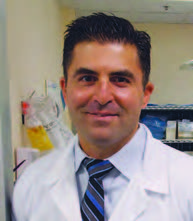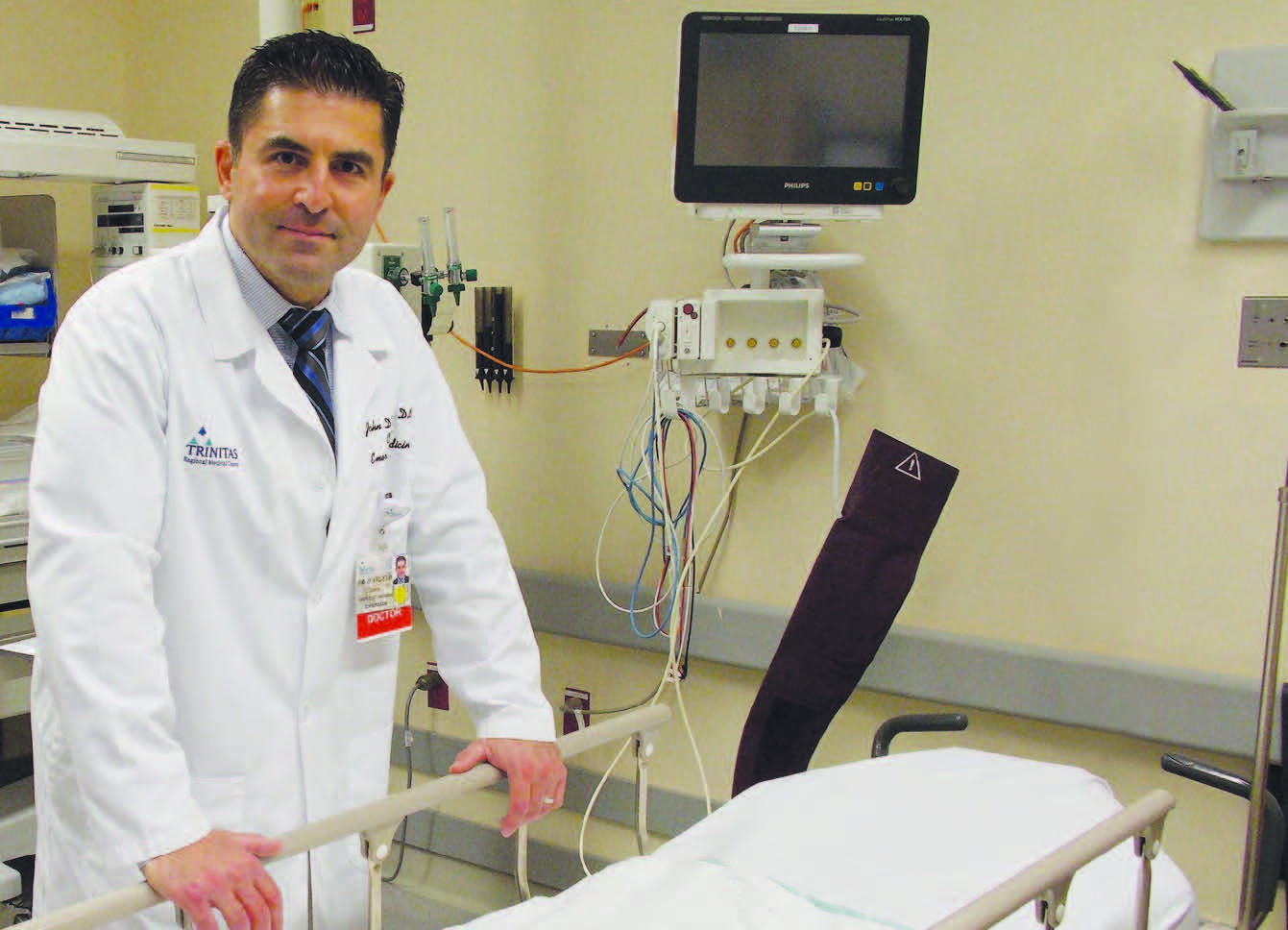’Tis the Season
Springtime heralds a new season of outdoor activities—hiking, biking, jogging, team sports—and after a long winter you are ready to take them on…or so you think. The musculoskeletal system of the body is a complex network of bones, ligaments, muscles and tendons, and at this time of year we see an uptick in sprains, strains and fractures in the Emergency Department.
How many bones are in the human body?
We are born with 270 bones. As adults, we have 206 because some of those bones fuse as the body matures.
What’s the difference between ligaments and tendons?
Ligaments are fibrous tissue that connect bone to bone. Tendons are fibrous tissue that connect muscles to bone.
A joint is defined as two or more bones that join together to create motion.
Are sprained ankles the most common sports injury you see?
Yes. A sprain refers to ligamentous injury. Athletes and weekend warriors often turn the ankle over while running, jumping or pivoting on the ankle joint. Typically, the patient will hear a “pop” or report a tearing sensation. The ankle will swell and walking becomes painful. As clinicians, we are taught several degrees of sprains—first, second and third. The degree of sprain can lead to very important patient discharge instructions. If a patient has a third-degree tear of the ankle ligament, the recovery period is significantly longer.
Why do ligament injuries often take longer than broken bones to heal?
There are several reasons for this. Ligaments that are completely torn lead to joint instability. Ligaments have poor blood supply, which leads to a protracted recovery. Also, the articulating bones are left to move freely and unrestricted. This can lead to the non-union of bones, which—left unrecognized—can progress to chronic pain, swelling and arthritis.
Thankfully, most sprains are first- and second- degree injuries. They heal well with PRICE therapy: Protection, Rest, Ice, Compression and Elevation. Sprains that do not improve over a one- to two-week timeframe may require a repeat evaluation by a physician.
Are these types of injuries less serious in children than adults?
No. On the contrary, children are not “little adults.” A limping child, no matter the circumstance, needs to be evaluated by a medical professional. Also, swelling over a joint, as well as persistent pain and swelling over a bone, requires a medical evaluation. In addition, persistent back pain in a child or an adolescent necessitates a medical evaluation.
How do strains differ from sprains?
A strain refers to an injury to the muscle-tendon complex. Strains are commonly seen in patients who have overstressed muscle groups or who have tried to generate excessive force in a non-conditioned muscle. The generation of tremendous contraction forces coupled with excessive forcible stretching results in a severe strain. Patients typically present a day or two after the injury, because of increasing pain and spasm. The majority of back pain will resolve on its own with rest, analgesia and time. After approximately two weeks, 50 percent of back strains resolve and nearly 80 percent resolve after about six weeks.
What’s the best way to avoid sprains and strains when I begin my springtime outdoor activities?
Proper stretching and mobility exercises are the key to an injury-free spring and summer. Shedding winter weight is another way to assure healthy activity. A five- to ten-pound weight gain can place undue stress on the back and joints.
Can I treat minor injuries effectively myself?
Yes. If you do find yourself injured after a day on the golf course or in the yard with the kids, there are some home remedies that might speed your recovery, including ice and heat. Ice works very effectively as a natural anti-inflammatory and a pain reliever. About 20 minutes every hour for the first three days is prudent. Heat is for muscles, chronic pain and stress. Heat relaxes muscles that are in spasm and calms trigger points of pain. Some more advanced sports medicine clinicians recommend a combination of both hot and cold therapy, which can act like a therapeutic stretch. The cold contracts the tissue and the heat relaxes the tissue. In either case, don’t forget to protect your skin with some kind of barrier to avoid scalding or frost injuries.
What about “getting back on the horse” after a day or two of rest?
Joints are designed to stay in motion. If you injure a knee, ankle, back, shoulder or wrist, you want to avoid prolonged immobilization. Our bodies are meant to stay in motion—the longer we restrict our mobility the longer our recovery may be. However, aggressive early immobilization is smart. Then, if you can move the joint after a day or so of immobilization, introduce the joint to its original fluidity, but reduce its workload. Be very cautious. Slow and steady wins the race. Listen to your body as it permits you to heal. Over-ambitious weekend warriors often find themselves reinjured when they don’t exercise patience with an injury.
When does a back strain warrant a trip to the ER?
In general, if you can’t explain the mechanism that led to the back pain, then an evaluation is warranted. Also, certain historical symptoms and signs would demand an urgent Emergency Department visit, including:
- Sudden onset of back pain without a coinciding mechanism
- Sudden loss of urine or inability to control bowel or bladder
- Fever or chills associated with back pain
- Abdominal pain accompanying back pain
- Age greater than 65 years of age
- Weakness in an extremity
- Intravenous drug users
- Blood in the urine
- Mid-line back pain
- A cancer patient
- COPD patients
How can I tell if my child has a growth plate injury?
These injuries can be insidious. When a child or adolescent presents to the Emergency Department with tenderness and swelling over a joint, we assume there might be a growth plate injury. Growth plate fractures occur in areas where the ligaments are stronger than the developing bone. Most growth plates are closed between the ages of 12 to 16 years old. If a fracture is seen in an x-ray, we can formulate a treatment plan. But sometimes these injuries are occult fractures, which aren’t detected by x-rays until much later. This is referred to as a Salter Harris Type1 injury. The clinician will explain to the parent or guardian that we do not see a fracture, but we cannot completely rule out a growth plate injury, so a reexamination is scheduled in 7 to 10 days. X-rays taken at that point may show no change, which suggest a sprain, or reveal a growth plate fracture. The growth plate attempts to lay down new bone to heal, which appears as a scar or increased density within the growth plate—which wasn’t there on the initial x-ray. A growth plate fracture requires four to six additional weeks of immobilization.

John D’Angelo, DO Chairman/Emergency Medicine Trinitas Regional Medical Center
Editor’s Note: John D’Angelo, DO, is the Chairman of Emergency Medicine at Trinitas Regional Medical Center. He has been instrumental in introducing key emergency medical protocols at Trinitas, including the life-saving Code STemi, which significantly reduces the amount of time it takes for cardiac patients to move from the emergency setting to the cardiac catheterization lab for treatment.





